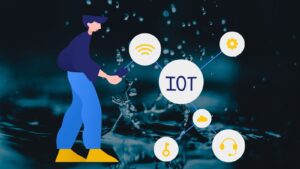Aquifers are a body of permeable rock that can contain or transmit groundwater. Groundwater can be stored in a rock or sediment. Aquifers can be divided into two categories: confined and unconfined. Unconfined aquifers are found underneath a permeable layer of soil, whereas confined aquifers are covered by an impenetrable layer of rock or clay. The term “groundwater” refers to precipitation that has seeped into the soil below the surface and accumulated in voids underground. Groundwater makes up a large portion of the water we use for domestic, commercial, or agricultural uses. Aquifers are the source of the majority of groundwater, including a sizeable portion of our drinking water. The importance of aquifers, how they are detected, and how groundwater can be extracted from them will all be covered in this article.
Importance of Aquifers
Deep aquifers have long been water sources for irrigation. Many small towns, even big cities, get their water from aquifer wells. Large wells offer water resources for cities, farms, and businesses. Wellfields are collections of wells that share a single source of water. Utilising groundwater from limited, deep aquifers offers a stronger defence against contaminated surface water. Aquifers that sustainably supply fresh groundwater to cities and for agricultural irrigation are often found close to the surface and can get some recharge from rivers or precipitation that seeps into the aquifer. One of the most significant sources of water on Earth is groundwater found in aquifers: According to the National Oceanic and Atmospheric Administration, groundwater accounts for around 30% of liquid freshwater (NOAA).
Technologies In Groundwater Exploration
As groundwater becomes increasingly important for living and the environment, techniques are asked for an improved exploration. The existence of groundwater and aquifer parameters have been successfully evaluated using the principle of Surface Nuclear Magnetic Resonance (SNMR). This method makes it possible to identify and evaluate water for the first time using only surface measurements, providing quantitative data on the amount of mobile water present as well as pore structure factors that influence hydraulic conductivities. Aquifers that are 50 metres or deeper can be reliably identified. High levels of precision are used to estimate the water content, and relaxation durations are included to determine hydraulic conductivities. It is possible to augment and corroborate the information obtained with SNMR through further measurements with geoelectrics and radar as well as to apply a collaborative multimethod approach to aquifer assessment.
Obtaining Groundwater From Aquifers
A well must be made by drilling a hole that reaches the aquifer in order to access groundwater from aquifers. Aquifers can discharge naturally at springs and in wetlands in addition to at man-made locations like wells. If we utilise groundwater more quickly than it can regenerate itself, it could run out. Recharging describes the process by which precipitation replenishes aquifers. Aquifer depletion has risen mostly as a result of increased agricultural irrigation. The aquifers may be dug into and water pumped out of. The porous rock of the aquifer eventually receives water (recharge) from precipitation. However, each aquifer’s rate of recharge varies, thus this must be taken into account when drawing water from a well. Pumping too much water too quickly depletes the aquifer of water, which eventually results in a well producing less and less water until it eventually runs empty.
Threats To Aquifers
In addition to groundwater levels, the quality of water in an aquifer can be threatened by saltwater intrusion (a particular problem in coastal areas), biological contaminants such as manure or septic tank discharge, and industrial chemicals such as pesticides or petroleum products. And once an aquifer is contaminated, it is notoriously difficult to remediate. Quantifying the vulnerability of aquifers, wells, and surface water sources is a crucial part of the impact assessment for a particular threat. A given receptor’s vulnerability refers to its potential to be impacted by a particular hazard or combination of threats. The legitimacy and efficacy of these procedures are still up for debate, despite the fact that several strategies and methodologies have been developed to measure how vulnerable a certain groundwater supply is to a particular set of risks. The uncertainty surrounding the threat assessment process, which frequently depends upon the prioritisation and quantification of the impacts of a complex set of interrelated threats to both the quality and quantity of the relevant groundwater resource, is one of the biggest threats to the integrity of groundwater resources. Often, this ambiguity is not given adequate thought.
The Biggest Problem We Face
- sewage
- animal wastes.
- agricultural runoff (which may contain fertilisers and pesticides)
- polluted stormwater/floodwater.
- industrial pollution.
- seepage from rubbish tips and other chemicals.
- naturally occurring chemicals (e.g. arsenic)
- radioactive materials.
Be The First To Experience The Upcoming Technology
Researchers are currently working on developing technologies and solutions that will allow Water Asset Managers to detect the different types of contaminations that are present in the groundwater of aquifers and the strength of each contamination in the water. Moreover, researchers are working on establishing technologies that are specialised in purifying groundwater obtained from aquifers to the highest possible level. Once successful, it is crucial to integrate the new-coming technologies into Smart Water Assets to keep expanding our water resources and utilise aquifers to the highest potential. Though they are still in their developing stages, it comes without a doubt that these technologies will powerfully impact the Water Industry and turn a new leaf in this line of service. Do not miss out on this new age of evolution and be the first to have the most influential technology in the Water Industry.







